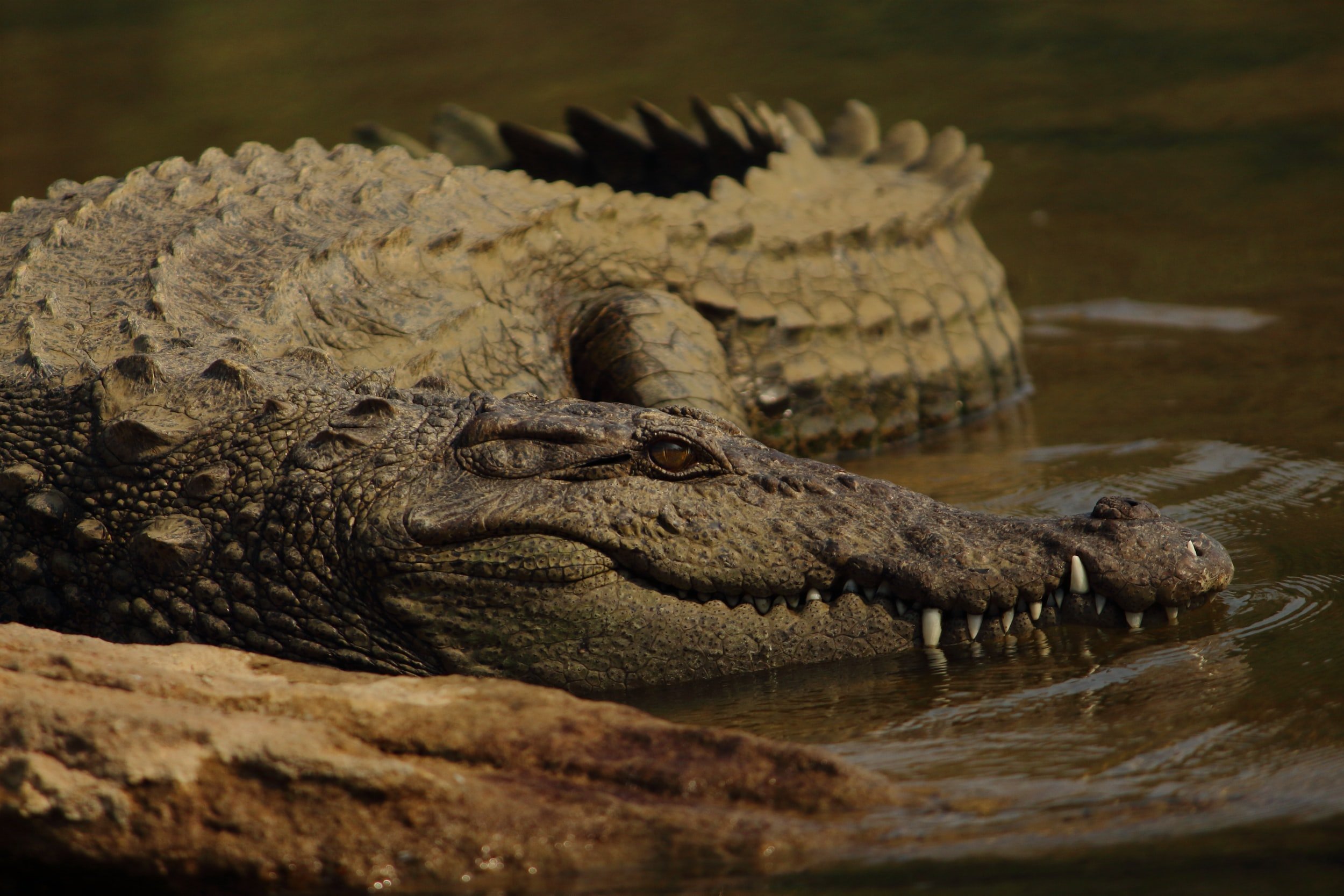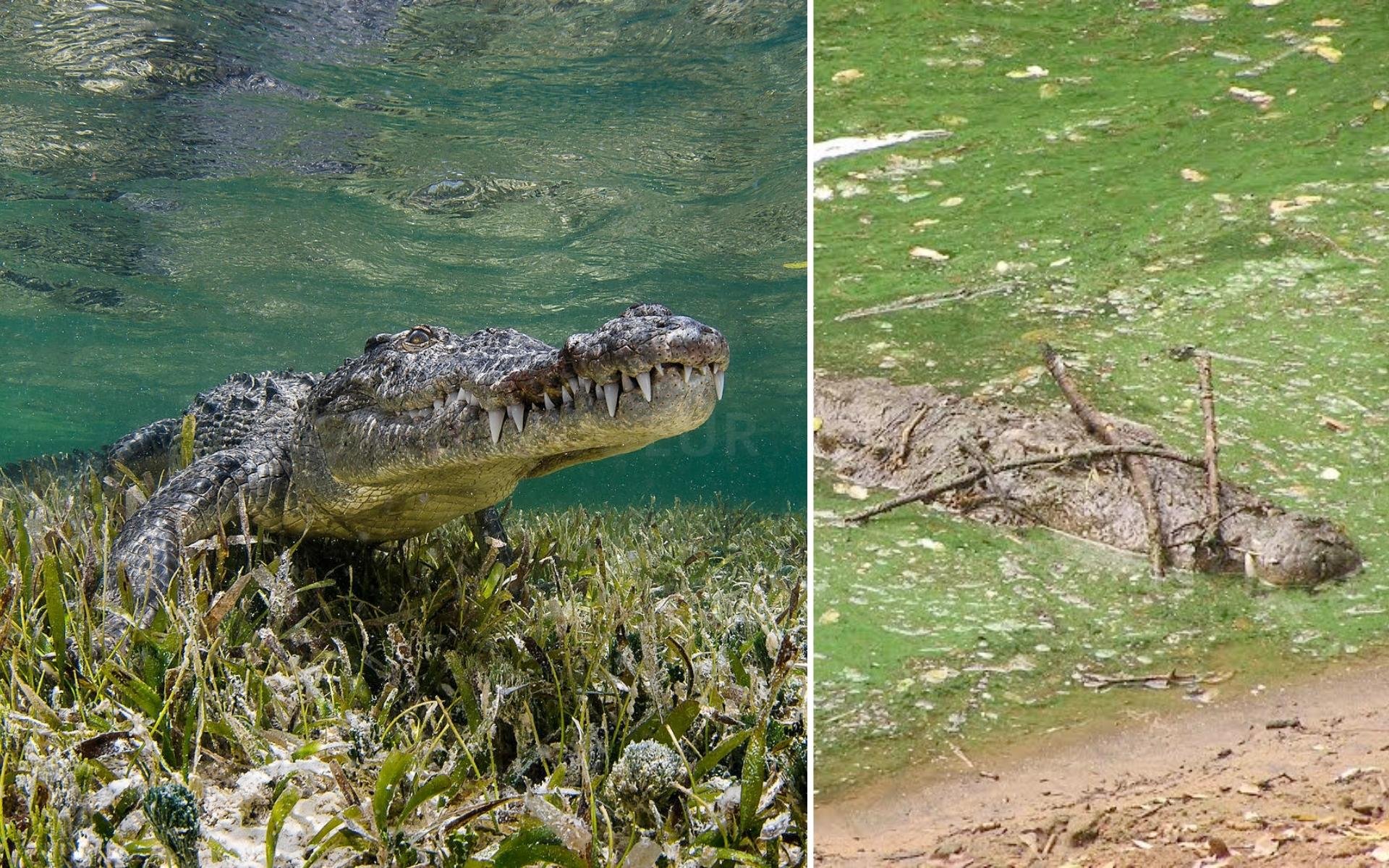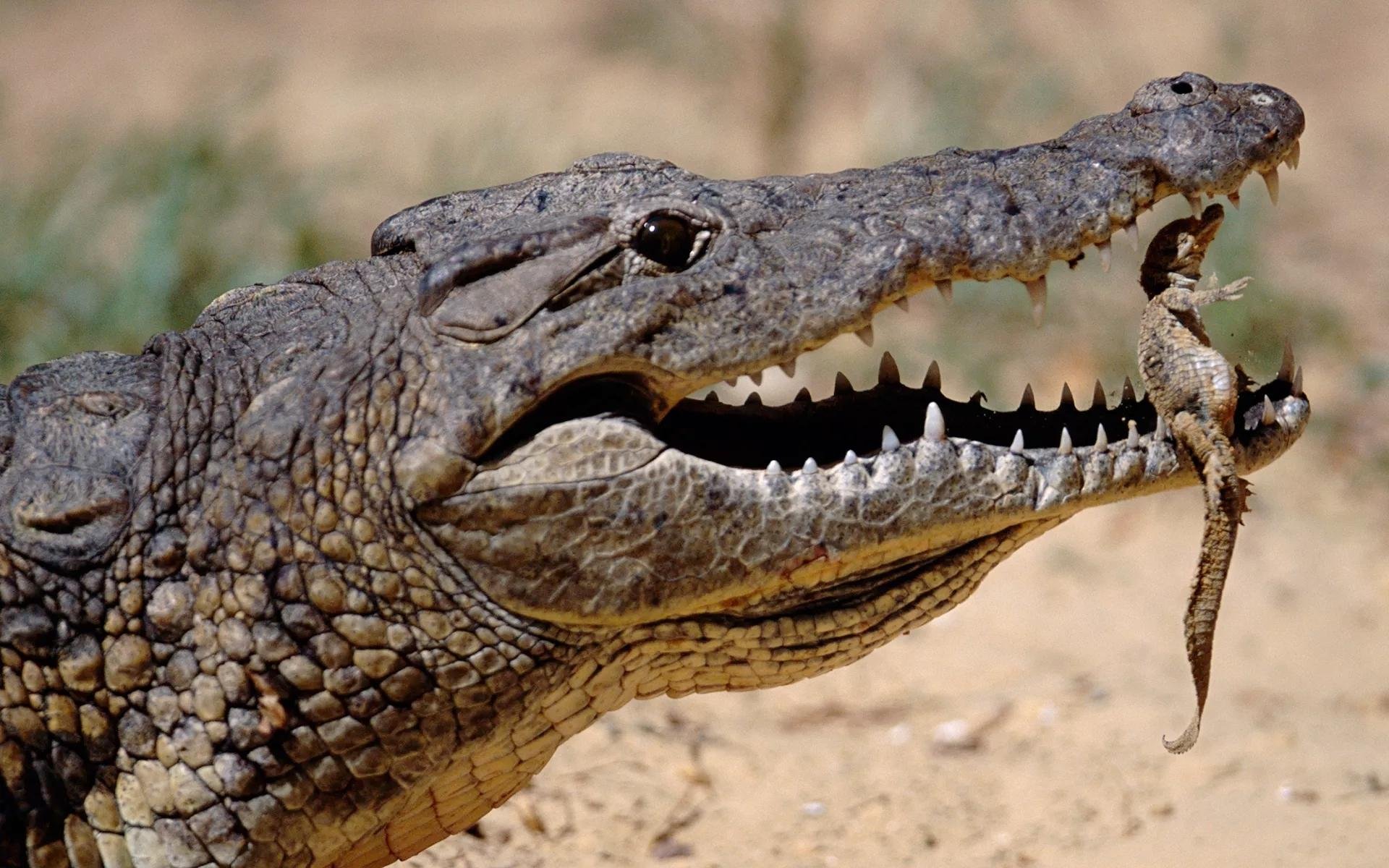
Did you know these 5 facts about crocodiles?
When we think about crocodiles, we picture their tough exterior, strong jaws, and sharp teeth, but there is so much more to these fascinating creatures - they walked among dinosaurs, their bodies are build for survival, they use tools, mothers are maternal, and they are vital for ecosystem functioning.
1. Crocodiles are living dinosaurs
The crocodiles that exist today are extremely similar to their ancestors who roamed the earth 200 million years ago. In Australia, crocodile fossils found date back to over 100 million years ago! In early 2022, Australian scientists uncovered evidence of a new species of crocodile whose last meal could have been a dinosaur. Crocodiles play a crucial role in maintaining biodiversity, nutrient cycling, and ecosystem functions in the areas they inhabit.
2. Crocodiles are built for survival
Crocodiles are highly adapted to their environment, in terms of their body structure and functions. They are often described as the embodiment of stealth, as they can remain motionless and hold their breath for about an hour and speed to the bottom of the water without making a single ripple on the surface. They can swim up to 30kms per hour while hunting or run in short bursts at 12-14kms per hour. They have excellent vision, a highly developed smell, an acute sense of hearing, and extraordinary abilities to detect and respond to minute changes in their environment.
Crocodiles have thousands of tiny, raised black spots or domes on their heads, along their jaws, inside their mouths and between their teeth that are ten times more sensitive than human fingertips. It helps them feel vibrations in their environment and also measure the level of salt in the water. Their outer bony scales create an armour for protection while also helping to regulate their temperature. If they lose a tooth, they have a second waiting to replace it underneath. In total, they can go through as many as 8,000 teeth in their lifetime. To help with digestion, crocodiles swallow small stones that grind up the food in their stomachs and, thanks to their slow metabolism, they can survive for months without food - scientists believe this is part of what helped them survive the mass extinction event. Some species have also been know to use tools to lure prey, such as small sticks to attract birds who are looking for nesting materials. All of these incredible adaptations are important for hunting and have made crocodiles an apex predator.
Crocodiles using sticks and twigs to attract prey.
Credit: (L) Greg Lecoeur (R) Vladimir Dinets
3. Crocodiles communicate visually, chemically, and acoustically
Crocodiles have some of the most acute senses in the entire animal kingdom, which comes in handy when they communicate. They communicate through visual displays, smells and different vocalisations. A mother crocodile is very maternal and her babies start to communicate with her while they are still in the egg. In the first months of their lives, all species of crocodiles vocalise frequently. Common calls include "hatching calls" to get their parent's attention, "contact calls" which are thought to develop relationships among juveniles and "distress calls" to get their parent's protection. When they get older, they bellow, growl and hiss. Males puff themselves up to appear bigger and express dominance, clap their jaws to threaten others and vibrate their bodies. They bellow in courtship, hiss, snarl, and let out infrasonic booming sounds when distressed. They also have shown that they are capable of complex behaviours and rapid learning. While adults can be solitary, some species are known to hunt in groups, showing coordination and collaboration among individuals.
Crocodile mothers carry their babies in their mouth to protect them.
Credit: Anup Shah
4. Crocodiles are explorers
In Queensland, the Northern Territory, and Western Australia both saltwater and freshwater crocodiles can be found in or near rivers, lakes, streams, swamps, billabongs, beaches, and the ocean. They travel up to 1 kilometre on land and saltwater crocodiles can spend days or even weeks at sea, drifting and swimming hundreds of kilometres. They are known to travel outside of their home ranges, and males compete fiercely for their territory.
5. Crocodiles are treated poorly in Australia
Like so many other species, humans in Australia have almost caused the extinction of crocodiles. When hunting finally ceased in 1970, there were fewer than 3,000 saltwater crocodiles left in the wild. Thankfully today, their populations have somewhat recovered and there are an estimated 100,000 saltwater and 100,000 freshwater crocodiles in the wild. Despite this, the species still faces significant threats.
Despite crocodiles being “protected” in some states, including Australia’s “croc capital” of the Northern Territory, they are still ruthlessly exploited for profit. When they were taken off the Convention on International Trade in Endangered Species list, the export ban on their skins was lifted and Australian crocodile farms began to flourish. These farms, mainly in the Northern Territory, account for a shocking 60% of the global trade in crocodile skins today. The industry is steeped in unspeakable suffering, endless confinement, and outrageous cruelty.
Crocodiles are sentient and intelligent animals who need adequate space to exercise and express natural behaviours. These opportunities are denied in a captive farm environment. They will never hear their mothers chirrup to them, know freedom or any of the things they would experience in the wild. They are bred in captivity and imprisoned in vast factory farms. When they grow, existing laws do not even require their cages to be as long as their bodies. Though saltwater crocodiles live for around 70 years and are the largest species in the world, they are killed at just 2 or 3 years old and rarely reach 2 metres - far less than the 5 metres they can reach in the wild. When they are big enough to be used to produce handbags they are shot in the head or bludgeoned to death. It takes four crocodiles to make one overpriced crocodile skin purse.
Juvenile crocodile on Australian farm
Credit: Kindness Project/Farm Transparency Project
Kindness Project exposes crocodile farming
In 2021, Farm Transparency Project and the Kindness Project exposed the shocking cruelty of crocodile farms in Australia for the first time. The world witnessed an otherwise unseen horror - farmed crocodiles collectively confined in “grow-out buildings” or imprisoned in small concrete isolation pens to better preserve their skin. You can watch the full exposé below.
#DropCroc you can help crocodiles
The use of exotic skins is becoming increasingly controversial. Leading brands like Chanel, Victoria Beckham, Mulberry, Karl Lagerfeld, Vivienne Westwood, and Tommy Hilfiger have either committed to or are actively moving away from using skins and wild animals in their products and are shifting to humane, plant-based alternatives. Despite this, Hermes plans to expand their farming of saltwater crocodiles in the Northern Territory. In response to the shocking footage from a Hermès crocodile farm, Farm Transparency Project, The Kindness Project, Animal Liberation NSW, Animal Liberation QLD, World Animal Protection, Collective Fashion Justice and others are mounting global protests targeting Hermés asking them to drop the use of crocodile skins - but we need your help.
Send a letter to Hermés asking them to #dropcroc.
Join your local protest - Kindness Project organise protests outside of Hermés all around the world.
The use of plants to make leather is growing at environmentally-friendly products made from a veritable orchard of natural materials, including cactus, apples, hemp, pineapple, corn and tree bark, means there is no limit on sustainable options for all animal skins. Equally, there is no excuse for subjecting crocodiles to the cruelty of confinement, the oppression of a barren cell, and agonising death at the hands of greedy industries.
Animal Liberation’s mission is to permanently improve the lives of all animals through legislation, consumer advocacy, action, and education. We are a not-for-profit organisation and our work for the animals relies solely on support from generous people like you. Help keep our work alive by becoming a member today or making a donation gift.




